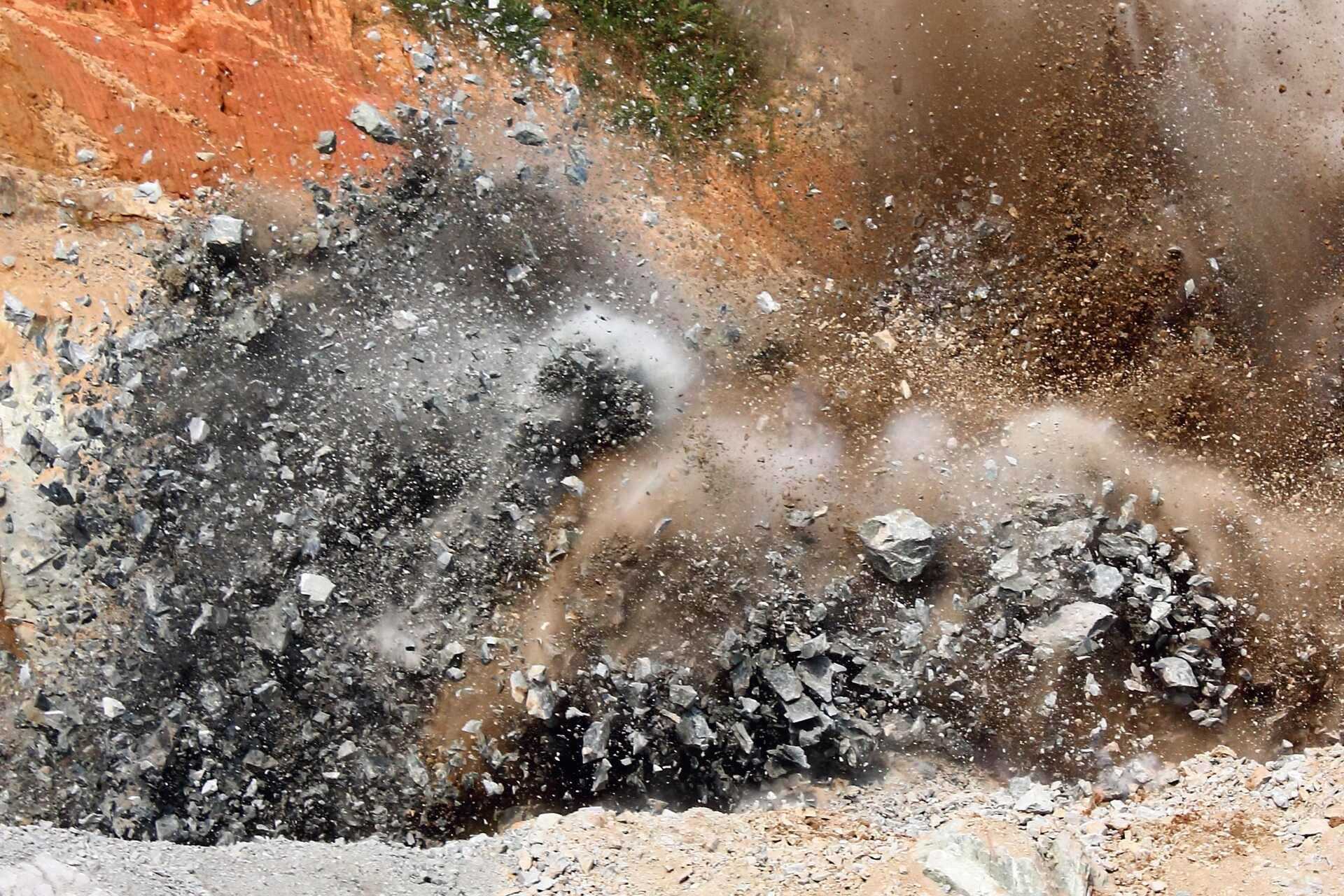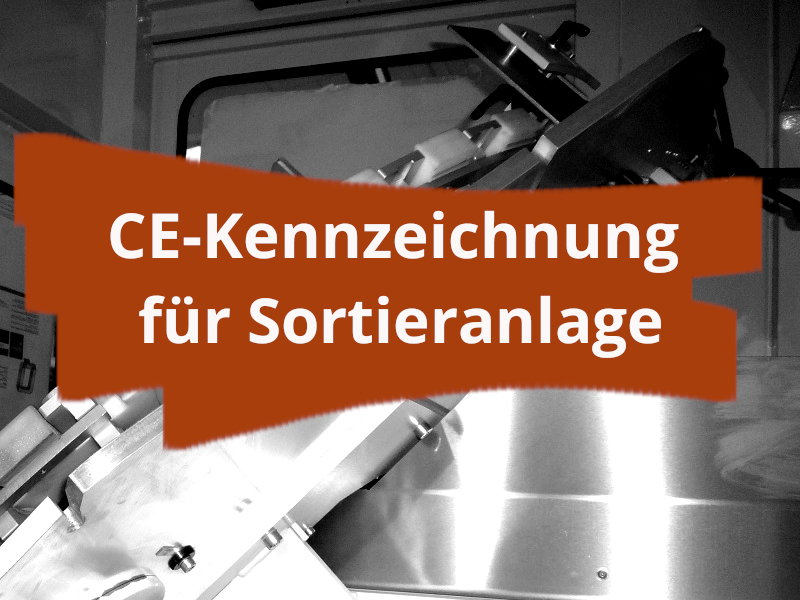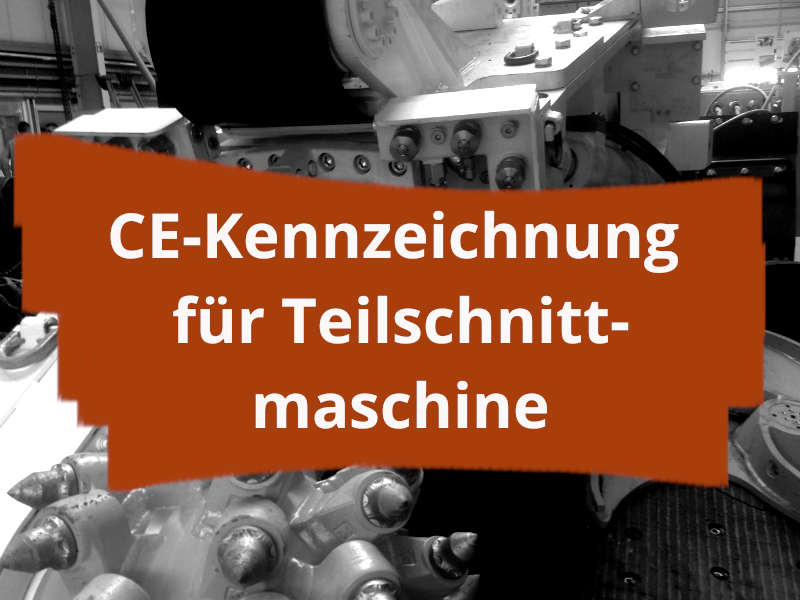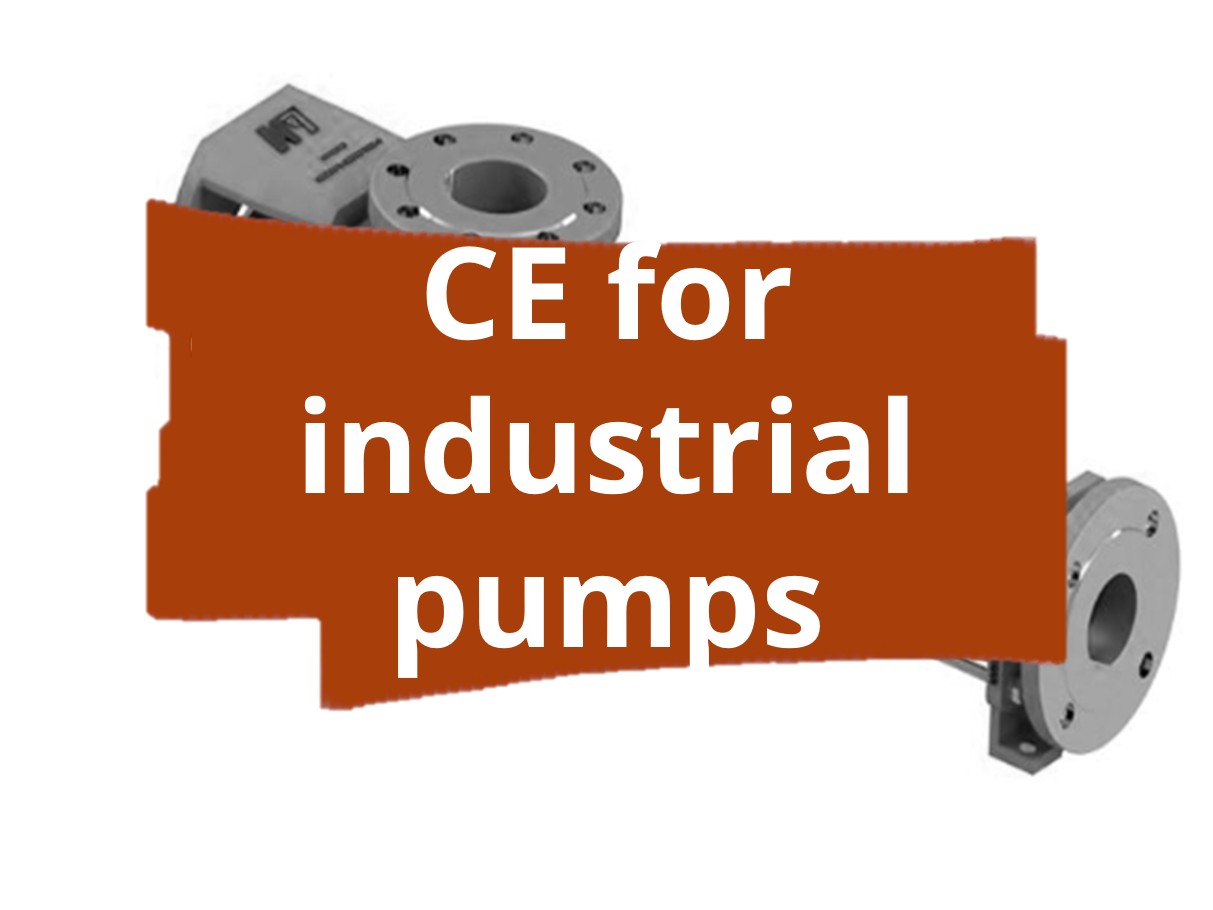ATEX Directive correctly applied: These requirements result for your CE-compliant product
We take care of your CE marking along with accompanying measures.
You can affix the CE mark and sign the declaration of conformity without worries.
Willy Lebherz
Geschäftsführer easyCE GmbH

Declaration of conformity done!
Receive your CE declaration of conformity ready for signature.
Risk assessment completed!
CE mandatory risk analysis conducted.
Relevant directives & standards applied!
Your product evaluated against relevant directives and standards.
Technical documentation created!
Receive a pragmatic, user-friendly operating manual.
CE mark attached!
Simply affix the CE mark and you're done.
CE marking routines differ depending on your role
CE AS PRODUCER
- The ATEX Directive or EU Directive 2014/34/EU deals with 'equipment and protective systems intended for use in potentially explosive atmospheres'.
- It describes the characteristics of products intended for use in an environment with an explosive atmosphere.
- The ATEX Directive applies to all electrical and non-electrical equipment intended for use in potentially explosive atmospheres. Potentially explosive atmospheres are classified into zones 0, 1, 2, 20, 21, and 22.
- When assessing conformity according to ATEX, the stricter the zone, the stricter the integrated explosion safety of the product and thus the measures to be implemented by the manufacturer to avoid dangerous situations.
- ATEX is derived from the French abbreviation for Atmosphères Explosibles. The directive is binding for manufacturers and distributors who distribute and market such products.
The experts at easyCE are happy to assist you with placing your product on the market in the EEA and assessing special cases. We support you with CE, UKCA, and other markings.
FAQ
What is the ATEX Directive?
The ATEX Directive is a CE marking directive that describes which equipment is permitted in environments with explosive atmospheres. ATEX 2014/34/EU (which replaces Directive 94/9/EC) covers
"equipment and protective systems intended for use in potentially explosive atmospheres." Compliance with the directive thus authorizes the product for sale (or placing on the market) within the European Union.
When must the ATEX Directive be applied?
The conformity assessment according to the ATEX Directive and ultimately CE marking is mandatory for all electrical and non-electrical equipment intended for use in potentially explosive atmospheres (see below).
This serves to demonstrate the product's conformity with the ATEX Directive and its suitability for placing on the EU market. A CE marking according to ATEX is intended to enable the free movement of products throughout the European Union. Therefore, it must be applied if the product is intended to be placed on the market throughout the European Economic Area.
The manufacturer is responsible for ensuring the conformity of its products with the Directive and for designing and constructing its products in accordance with the essential health and safety requirements and for following the procedures for assessing the conformity of the product.
Which products are affected by the ATEX Directive and must bear the CE marking?
The ATEX Directive applies to all electrical and non-electrical equipment intended for use in potentially explosive atmospheres. These include:
- All products (equipment and protective systems, electrical and non-electrical) intended for use in potentially explosive atmospheres
- All products (safety, control and regulation devices) that contribute to the safe operation of other products with regard to explosion risks
- Also individual components that do not have an autonomous function but operate as part of one of the above-mentioned products (devices or protective systems). Examples of such products include automatic lubrication systems, computers, electric motors, electric fans, heating cables, and burners. Examples of protective systems include flame arresters, rotary valves, etc.
Which products are explicitly exempt from the ATEX Directive?
The Directive does not apply to the following products
- medical products (however, a CE marking for medical devices is required here)
- Products, equipment and protective systems containing explosive substances or unstable chemical substances
- Products (devices) intended for use in domestic and non-commercial environments
- personal protective equipment (however, CE marking is required in accordance with the PPE Regulation 2016/425)
- Seagoing vessels and mobile offshore units together with the equipment on board such vessels or units
- Means of transport, i.e., road, rail, or water networks, as well as means of transport intended for the carriage of goods by air, on public road or rail networks, or by water. Vehicles intended for use in potentially explosive atmospheres are also included.
What does the ATEX Directive require for CE marking?
In order to be permitted to affix the CE marking to a product intended for use in an explosion-protected area, the product must be manufactured with integrated explosion safety in mind. To this end, the ATEX Directive requires the implementation of certain measures depending on the classification of the hazardous area (zone).
What measures must manufacturers take to be allowed to affix a CE mark?
The ATEX conformity assessment verifies and ensures that the product is designed and manufactured in such a way that measures have been taken to prevent hazardous situations, even in the event of malfunctions. These measures, which manufacturers (distributors) take, are the following:
- to prevent the formation of explosive atmospheres that may be generated or released by the product itself,
- to prevent the ignition of explosive atmospheres, taking into account the nature of any electrical and non-electrical ignition source,
- Should an explosion nevertheless occur which could directly or indirectly endanger living beings or objects, it must be stopped immediately and/or the area of the explosion flames and explosion pressures must be limited to a sufficient level of safety.
Furthermore, the design must ensure that the actual or foreseeable environmental conditions are appropriately addressed and that any reasonably foreseeable misuse is taken into account. To ensure this, organizational measures at the management level are necessary.
What is the purpose of classifying hazardous areas as Ex zones?
In principle, the stricter the zone, the stricter the product's integrated explosion safety and therefore the measures to be implemented by the manufacturer.
In the ATEX conformity assessment, the risk assessment is carried out by classifying the hazardous area into zones. The classification of potentially explosive atmospheres into zones depends on the expected frequency and duration of the presence of an explosive atmosphere.
Which Ex zones must be taken into account in the conformity assessment according to ATEX?
Potentially explosive atmospheres are classified into several zones. The explosion hazard can be caused by gases, vapors, mists, or dusts. Zones 0, 1, and 2 are caused by gases, vapors, and mists, respectively. 0 represents the zone with the greatest hazard and 2 the zone with the least hazard. Zones 20, 21, and 22 are caused by dusts.
Safe or non-hazardous areas are areas in which an explosive gas or dust atmosphere is not expected to be present in such quantities that special precautions are required for the design, installation and use of equipment.
How are ATEX zones 0, 1 and 2, which are created by gases, vapors and mists, defined?
Zone 0: An area with a permanent or frequent presence of an explosive gas atmosphere (over long periods). This zone is the most dangerous of the three zones for gases, vapors, and mists. Examples of Zone 0 include:
- paint spraying systems or storage facilities,
- Gas storage or containment.
- Potential hazardous situations could include surfaces of a flammable liquid directly into the atmosphere.
Zone 1 An area in which "an explosive gas atmosphere consisting of a mixture with air or flammable substances occurs occasionally or regularly during normal operation. Examples of Zone 1 or 2 are:
- chemical or petrochemical plants
Products that could be found in Zone 1 or 2 and therefore require CE marking are:
- Ambulance
- Reach truck
- Pallets
- Individual mechanical seals.
Zone 2: An area in which, during normal operation, an explosive gas atmosphere consisting of a mixture with air or flammable substances is unlikely to occur, or only briefly. An example of a potentially hazardous situation is the connection flange. Pools of flammable liquid that may form rarely or only briefly.
How are ATEX zones 20, 21 and 22, which are caused by dust, defined?
Zone 20 An area in which an explosive dust atmosphere in the form of a dust cloud in the air is present continuously, for long periods or frequently.
Some examples of Zone 20 are
- Filter
- Cyclones
- Dust transport systems
- Interiors of mixers
- mills
- dryers
- Desiccators
Zone 21 An area in which an explosive dust atmosphere in the form of a dust cloud in the air is likely to occur occasionally during normal operation. For example,
- Areas near filling and emptying points.
Zone 22 Area in which an explosive dust atmosphere in the form of a cloud of dust in the air is likely to occur during normal operation, but which is only present for a short time.
For example
- Areas near equipment that is occasionally opened.
- dust transport systems,
- Interiors of mixers,
- Mills
- dryers,
- A grain mill.
How do manufacturers verify product compliance with the ATEX Directive?
As part of the CE conformity assessment procedure, the manufacturer analyzes and confirms the product's compliance with the measures prescribed by the ATEX Directive. Manufacturers typically conduct the conformity assessment during the design and production phase of their products.
In addition, manufacturers are required to contact conformity assessment bodies or notified bodies to assess their products. These bodies are selected by each European member state.
Second, manufacturers must contact laboratories to conduct appropriate tests. These laboratories must be affiliated with a notified body to conduct the tests. Upon receipt of the report, the notified body issues a certificate confirming the safety of the product. This certificate is required for the product's free movement throughout the EU market.
The certificate shall contain the following information: name and address of the manufacturer, description of the device and/or serial number, reference to relevant harmonised standards, where applicable, reference to the specifications with which conformity is declared, details of the signatory and the last two digits of the year in which the CE marking was affixed.
The manufacturer's technical documentation required by 2014/34/EU must contain a description of the equipment or protective system, design and manufacturing drawings and diagrams, descriptions explaining the drawings and the functioning of the product, proof of conformity of the product with harmonised standards, calculations and tests, test reports and the certificate of the notified body.
Finally, the CE marking is affixed either to the device, the packaging or the instructions.
In the case of products of equipment groups I and II and equipment categories M 1 and 1, the EU type examination (Article 13 (1) a).
For products in equipment groups I and II, equipment categories M2 and M2, either: EU type-examination or conformity based on unit verification for internal combustion engines and electrical equipment. For other equipment, internal production controls or conformity based on unit verification (Article 13(1)(b)).
In the case of products in equipment category 3, either internal production control or conformity based on individual verification (Article 13 (1) (c)).
Which harmonized standards are often taken into account in conformity assessment?
A harmonized standard has been given legal force by the European Commission and provides a presumption of conformity with the Essential Health and Safety Requirements of the ATEX Directive. The list of harmonized standards is important for ATEX equipment manufacturers who have used these European standards for CE marking. These harmonized standards are prepared by the following organizations.
Some important harmonized standards are
EN 1010-1:2004+A1:2010 (Safety of machinery),
EN 1127-1:2011 (explosive atmospheres)
EN IEC 60079-0:2018 Explosive atmospheres - Part 0: Equipment - General requirements
EN 1127-1:2019 Explosive atmospheres - Explosion protection - Part 1: Basic concepts and methodology
EN 17077:2018 Determination of the burning behaviour of dust layers
EN 14460:2018 Explosion-protected equipment
Harmonized standards for compliance are then developed by European standards bodies. Both operators and equipment designers must be aware of the constant evolution of international standards.
Hundreds of companies trust easyCE














With easyCE, product compliance is really ‘easy’
Approach to CE marking
Type and manner of support
Scope of support
Contact during project processing
Find the easiest way to obtain the CE mark
Abbreviated process for CE derived directly from CE
All-inclusive or modular – whatever you prefer
Personal contact with experts who take your wishes into account
other CE service providers
Often lacking in sound judgement and unnecessarily complicated
Mostly flexible but often bureaucratic
Mostly flexible in terms of support scope
Mostly personal contact
CE Software
Follows standardised process; special circumstances not taken into account
Double burden for you: software management + no support during processing
Only according to software scope and purchased modules
No contact
You want support that lightens your workload and doesn't create more work.
This is what successful projects look like

CE-Kennzeichnung und Konformitätserklärung aller Lebensphasen einer Tunnelbohrmaschine zum Kupferbergbau in Australien
easyCE unterstützt das gesamte Konformitätsbewertungsverfahren inkl. Risikobeurteilung bis zur unterschriftsreifen Konformitätserklärung für alle Lebensphasen einer Tunnelbohrmaschine zum Kupferbergbau in Australien. Das vollkommen neuartige Konzept der Verwendung mehrarmiger Schneidköpfe war während des Verfahrens besonders zu beachten. Neben den herkömmlichen Vorschriften wurden spezielle Vorgaben an Sicherheit und Technik berücksichtigt, die in Australien gelten.
RL & VO: MRL - 2006/30/EU, EMV - 2014/30/EU, Niederspannung - 2014/35/EU, DGRL - 2014/68/EU, ATEX - 2014/34/EU

CE-Kennzeichnung und verschiedene Begleitmaßnahmen für Schaltschränken
easyCE unterstützt das gesamte Konformitätsbewertungsverfahren inkl. Risikobeurteilung bis zur unterschriftsreifen Konformitätserklärung für Schaltschränke. Insbesondere waren die Anforderungen aus der Maschinen-, EMV- und Niederspannungsrichtlinie bezüglich DIN EN 60204-1: 2019-06 und DIN EN IEC 61439-1: 2021-10 zu beachten. Es wurde ebenfalls eine Checkliste für die Auswahl an Komponenten erstellt, die spezielle Anforderungen (Lieferantenauswahl) erfüllen müssen.

CE-Kennzeichnung und Konformitätserklärung einer mobilen Satelliten-Kommunikationsanlage
easyCE unterstützt das gesamte Konformitätsbewertungsverfahren inkl. Risikobeurteilung nach EMV-Richtlinie bis zur unterschriftsreifen Konformitätserklärung für eine Satelliten-Kommunikationsanlage. Die Anlage sorgt für das redundante Weiterleiten von TCP/IP-Daten, um diese über zwei oder mehrere Satellitenantennen zu senden bzw. zu empfangen. Das System findet dort Anwendung, wo ein rascher Aufbau einer mobilen Kommunikationseinrichtung über große Entfernungen erforderlich ist.
RL & VO: RED - 2014/53/EU, Niederspannung - 2014/35/EU, EMV - 2014/30/EU

CE-Kennzeichnung und Konformitätserklärung für eine 2D-Laserschneidanlage
easyCE unterstützt das gesamte Konformitätsbewertungsverfahren für eine 2D-Laserschneidanlage mit automatischem Plattenwechsler. Für die Laserschneidanlage wurde das gesamte Sicherheitskonzept, inkl. 2-strahliger Lichtschranke abgestimmt, das Performancelevel ermittelt, eine Produktanalyse erstellt und eine Risikobeurteilung nach EN ISO 12100 durchgeführt. Besondere Anforderungen resultieren für die mechanischen Komponenten der Traverse für den Laserschneidkopf, insbesondere aber für die Kinematik des Plattenwechslers und Laserschneidkopf. Der Schneidprozess (Laserklasse 4) innerhalb der Kabine ist durch Laserschutzscheiben, zusätzliche Sicherheitseinrichtungen und der vollständigen Umhausung sicher vom Bediener abgeschirmt: Laserklasse 1 außerhalb der Maschine.
Berücksichtigt u.a.: 2006/42/EG, 2014/30/EU, EN 13675:2010-10 etc.

Conformity assessment procedure and CE marking for automated filter production systems
easyCE successfully supports CE marking up to the ready-to-sign Declaration of Conformity for an integrated production system for manufacturing respiratory protection filters. The risk assessment according to EN ISO 12100 enabled systematic identification of hazards at interface areas of the 11 integrated modules. During the safety integration of ATEX-relevant components (vacuum conveyor and extraction system), special requirements of EN ISO 13849-1 for functional safety were considered and documented.
Considering: 2006/42/EG, 2014/30/EU, 2014/34/EU

Conformity assessment procedure and CE marking for industrial pumps in potentially explosive atmospheres
easyCE successfully supports CE marking up to the ready-to-sign Declaration of Conformity for conveying pumps in hazardous areas. Particular challenges included the detailed ignition hazard assessment according to EN ISO 80079-36 and the implementation of constructive safety measures to protect against mechanically generated sparks and static charging. The pumps were successfully qualified according to ignition protection type 'c' (constructive safety) for use in Zone 1 and 2 with temperature class T3.
Considering: 2006/42/EG, 2014/34/EU
Get CE-marking done in 3 simple steps
Step 1
Request expert opinion
Ask for our expert opinion free of charge and find out what is necessary for the CE marking of your product. Be prepared to describe your product in broad terms.
Step 2
Receive our offer
If your product is subject to CE marking, we offer you our support with the CE marking and all accompanying measures. We will be happy to explain necessary steps on the phone.
Step 3
We get it done
When you place an order, you will be assigned your own personal CE expert who will carry out your CE marking and accompany you throughout the entire process. Your expert will also be at your side after the CE marking has been successfully completed.
Get CE-marking done, worry-free
Trust the experts of product safety and conformity


Willy Lebherz - Founder and Managing Director of easyCE
- Expert in product safety and conformity since 1995
- Recipient of the "Medal of the Order of Merit of the Federal Republic of Germany", awarded in 1983 by the then Federal President Carl Carstens
- Master of measurement and control technology
- Captain (ret.), Project Officer for Technical Logistics in the Army Material Office and Chief of the Telecommunications Repair Company
easyCE is a digital, dynamic engineering office with a focus on product safety and product conformity - especially CE-marking. We support manufacturers, operators and dealers in designing products safely and offering them on the market in compliance. We are a "full-service provider" and can take over the entire conformity assessment process for you if you wish. To do this, we support you in carrying out risk assessments, researching standards, product analyses, developing suitable safety precautions, preparing user-friendly technical documentation, coordinating tests and all other accompanying measures. easyCE was founded in southern Germany, but is now active globally.
We know what you need to do to get CE-marking done, worry-free.
